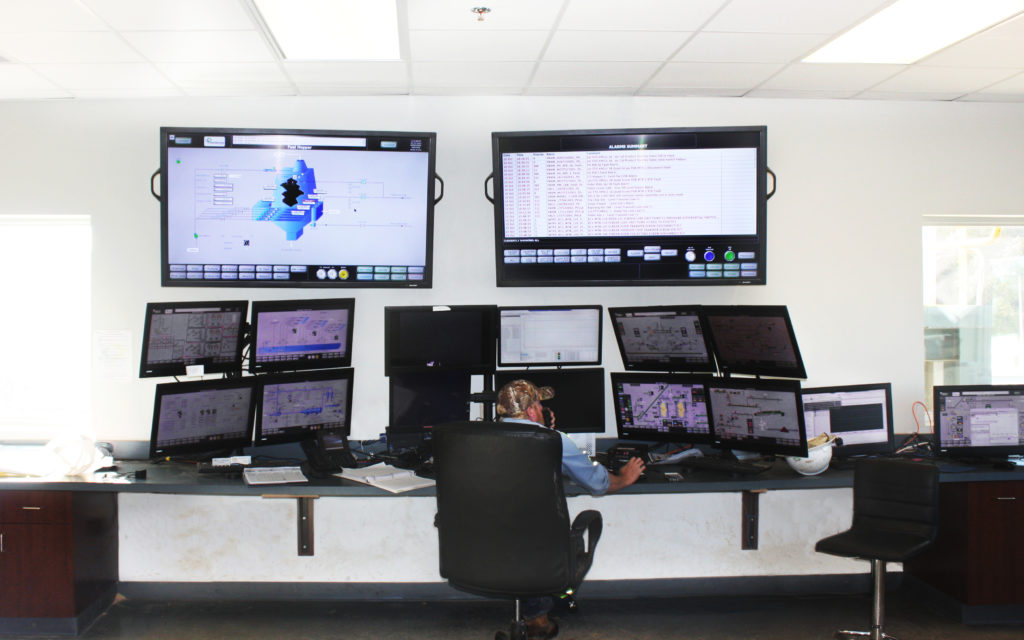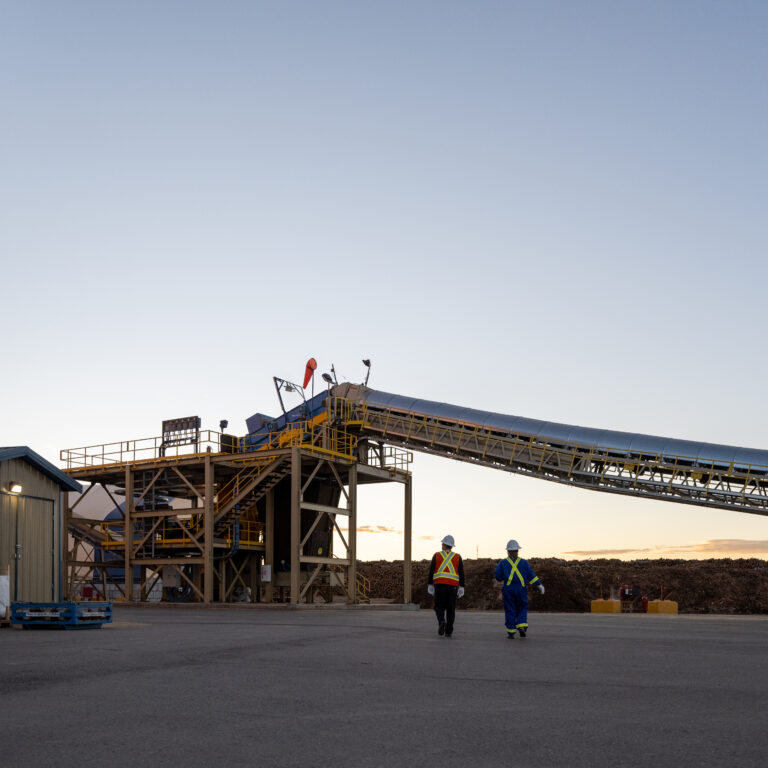The Amite BioEnergy pellet plant in Mississippi is a site of superlatives. The facility sits on an area bigger than 60 football fields and it can produce up to 450,000 metric tons of compressed wood pellets every year. Amid the bustle of employees and whir of heavy equipment, a single room offers a birds-eye view of it all: the control room.
The men and women inside this room have one of the most important jobs at the plant, and yet a large portion of that job simply involves staying alert and watching.
The wall of monitors
“You can’t let yourself become unfocused. Things can happen in the blink of an eye,” says Cole Wells, a Control Room Operator at Drax Biomass.
From his position inside the control room, Wells can monitor all aspects of the plant’s operations. The centerpiece of the room is a bank of 14 screens, each displaying information on a different step in the manufacturing process.
Wells and his fellow control room operators closely monitor a wide range of parameters, including: the temperature of the massive furnace, which reduces the moisture level in wood chips so they can be converted into pellets; the temperature and operating status of each of the 12 pellet mills; and the inventory within the storage silos that house the finished pellets.
The pellets produced at Amite BioEnergy are used to generate electricity at Drax Power Station in the UK. This process demands precision and accuracy. For example, the wood chips fed into the first stages of the pelletizing process should have a moisture level of between 11.5% and 12% – to ensure the finished product meets exacting design specifications.
Anything less can compromise the durability and performance of the pellet, so it’s essential for the control room to centrally monitor quality across the entire manufacturing process.
One of the control room operator’s most important responsibilities is to quickly identify when a piece of machinery is not operating properly. For this, Wells and his colleagues have the alarm screen.
Acting on alarms
Perhaps the most important visual in the control room is the alarm screen. It tracks plant performance against a set of alarm identifiers, such as high temperatures in critical equipment like the pellet mills.
When an alarm is triggered, the control room operator is immediately alerted. At this point, Wells springs into action.
“First of all I’m going to see what fault we have. Then I notify my operators to see if they can go out to find it,” he explains. The operator out on the plant floor will investigate to determine whether he can fix the fault. If he can’t, then Wells sends in the maintenance team. All of this must happen as quickly as possible – often in less than 10 minutes.
“If we have one fault it could lead to another, so before you know it you could be shutting down production,” says Wells. But tracking and acting on the alarms doesn’t just maintain production – it also keeps employees safe by ensuring that the plant equipment is functioning properly.
The inside of the control room is a very different environment from the rest of the plant. Wells, who began his career at Drax Biomass as an equipment operator, explains: “As a pellet mill operator you’re down [on the floor] turning wrenches. In the control room, it’s not as busy as far as turning wrenches, but you have to do a lot of thinking.”









